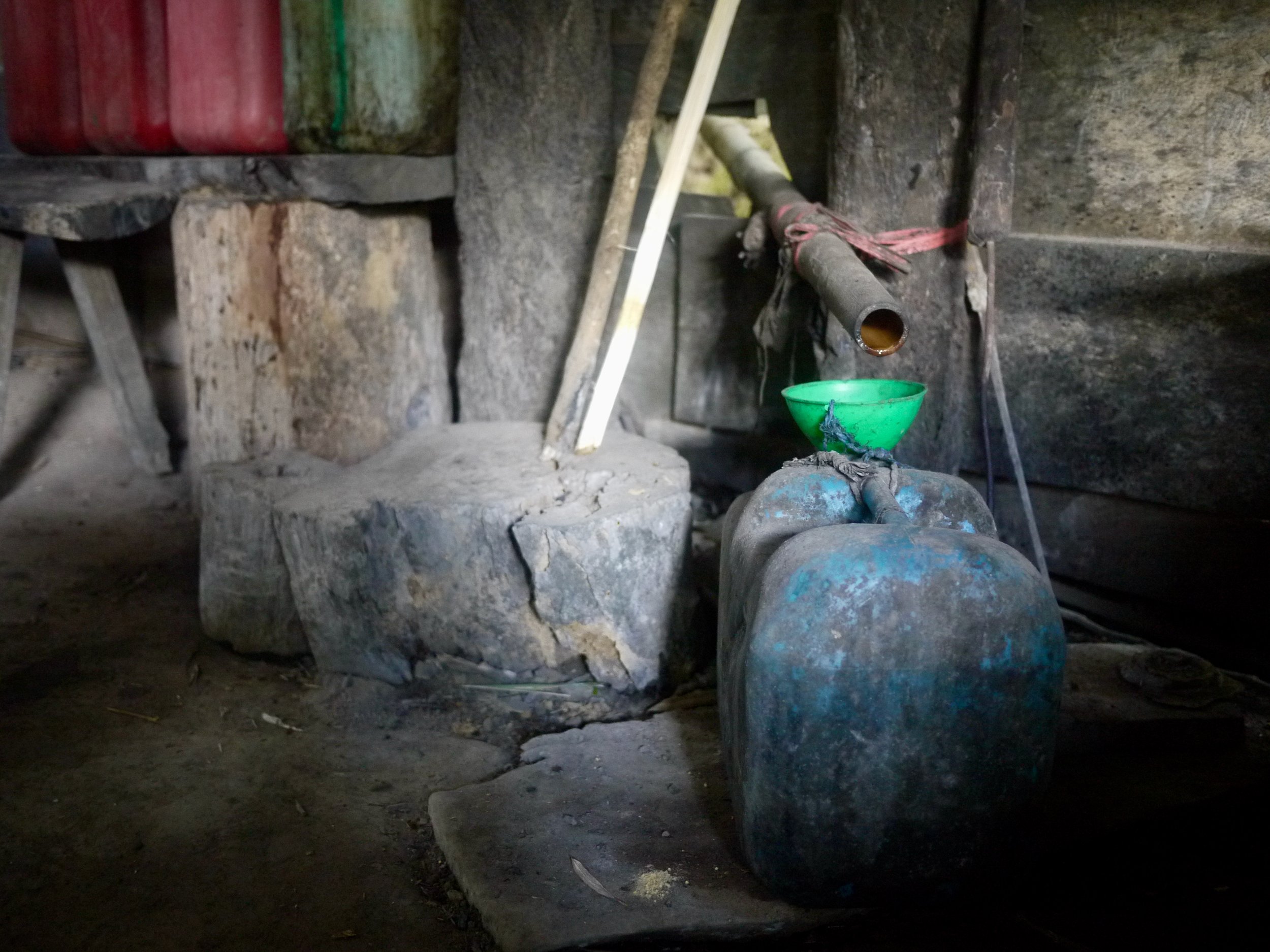Chapter 1 | Delineating Roots
Back at Tante Rita’s house, the other Thanksgiving guests had now arrived and were exchanging stories about their weekend. On the long table between them, a mosaic of food was laid out though not yet complete, as the finishing touches were still being prepared in the kitchen. Behind the house, searching for the bathroom, I noticed a large piece of bamboo high above my head. Though the sun stung my eyes, I gazed at it. It was tall and proud, the type of bamboo one usually found in the denser forests of North Sulawesi—thick, wide, and green. Unlike the pleasant sounds of bamboo wind chimes, these large bamboo trees would make eerie screeching sounds when swayed by the strong gusts of wind that blew through the thick of the forest. Here, separated from its roots and exposed to the direct sun, the piece of bamboo above me had lost most of its green color and was now a light brown. Along with four or so more similar pieces, it formed the typical assembly of pipes used for distilling Cap Tikus.
Chapter 1, Delineating Roots, takes us to a village where Cap Tikus is produced and maps the different things that Cap Tikus is made to be in different practices. It explores how different versions of “quality Cap Tikus” come to be and how they interact to affect other provisioning pathways.
"Uniting the seven regions was the extensive root network of the famous sugar palm trees (pohon seho) that were known in other parts of Indonesia as pohon enau or pohon nira."
"At the time of my fieldwork, the pohon seho had become the cornerstone for production of a wide range of local goods, with more than sixty different types of products created from a single tree (Sapuan et al. 2019). This included brushes and brooms from its fibers and palm sugar and vinegar from its sap, as well as traditional medicines, wood, rope, thread, and, of course, the drink Cap Tikus."
Bamboo pipes like this were something I had discussed with Iin, an environmental activist and member of the punk band Lamp of Bottle. We’d spoken at the basecamp of Tunas Hijau, an organization for young environmental activists and nature enthusiasts, and the conversation had turned to the question: Why the name Cap Tikus? Directly translated, cap means “label” or “brand,” while tikus means “mouse” or “rat.” Cap Tikus, therefore, could be translated as any combination of those words: “mouse label,” “rat brand,” and so on—though most people I met expressed a preference for either “mouse brand” or “mouse label.”
According to Iin, mice played an important role in the making of the stills: creating the pathways inside of the bamboo that enabled them to work as pipes. “Little mice help open the bamboo (bulu),” he said, “and they always find a way out.” He wasn’t the first to share this insight, but there were also plenty of other versions of how mice played a role in the birth of Cap Tikus. Another popular one was that it was a mouse that first discovered the sweet sap (saguer) of the sugar palm (Wenas 2007). The story went that it that had bitten into one of the palm leaves (mayang), causing sap to trickle out. This happened just as a farmer was passing by. Filled with curiosity, this farmer became the first person ever to taste the sweetness of saguer.
Alternative products called for the use of “more modern” and “more sophisticated” technologies, such as stainless-steel pipes, which farmers couldn’t afford; while several of the farmers I spoke to were willing to make the switch, they depended on the local government to subsidize and assist them.
The moral debate surrounding alcohol in Indonesia had made it less respectable for Om Roger and Om Keke to teach their children their craft; even though both expressed pride in the quality of their own Cap Tikus.
Inside this particular bottle was a large selection of roots, bark, and spices. These had been added to infuse the Cap Tikus with their flavors and unique health-giving properties, boosting the innumerable health benefits of the drink itself.
The drink’s strength was now reflected in the burning sensation in his throat. He looked like he was in pain, as if the bluish-purple flame was inside him; the corners of his mouth turned downward, and his eyes squeezed shut. He blew a gust of air from his mouth, then passed the glass to Gly, who was sitting next to him in the circle.
What is meant by quality, however, differs according to who is talking and can include different ways of knowing, measuring, and defining. The same batch of Cap Tikus can be valued highly by one metric (i.e., as a family recipe and the culmination of generations of knowledge) and, simultaneously, lowly by another (i.e., as unsafe or unhygienic because it was distilled using traditional bamboo rather than a “modern” material such as stainless steel), differences in world view mapped onto differences in value.
The text on this page is extracted from the PhD thesis: “Inside the Drinking Circle: Cap Tikus, Contested Modernities, and Youth Resistance in Manado, North Sulawesi.” This thesis was submitted by Nastasja Ilonka Roels as part of the Doctoral Regulations of the University of Amsterdam (UvA). All text references should be made to the original thesis manuscript, once published via the UvA Digital Academic Repository, and not to this website. Permission is required to copy, display or reuse images, songs, and videos.






















